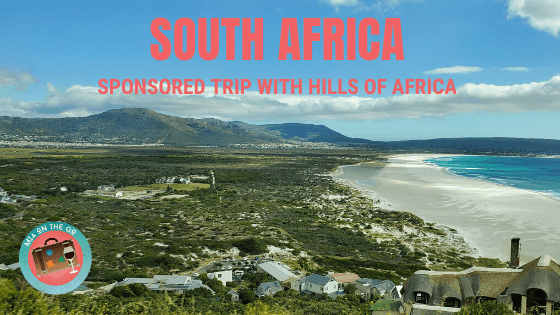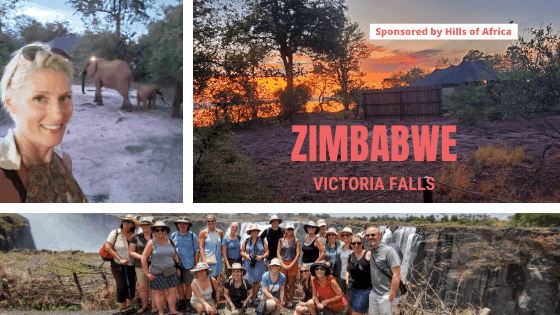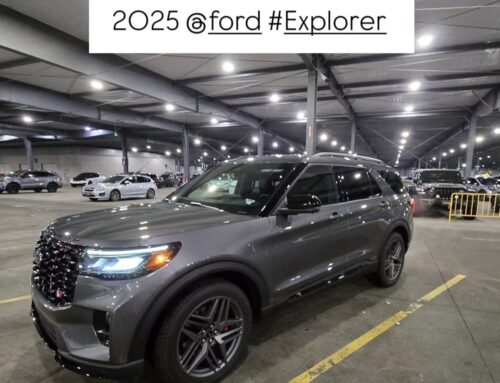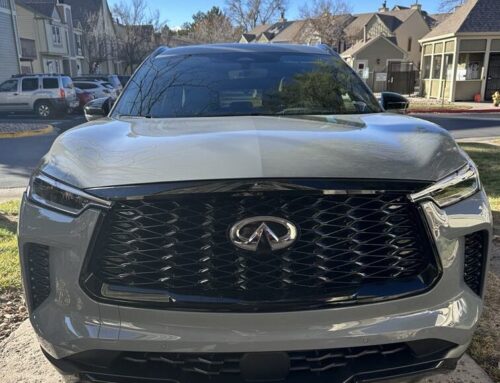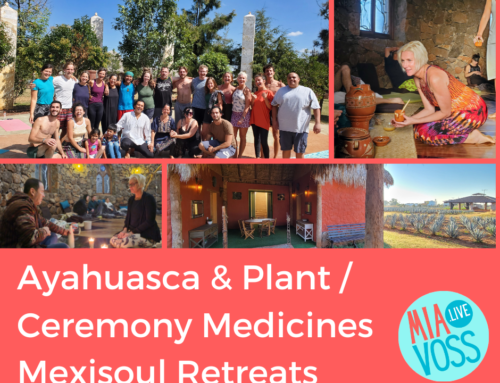Safari in Hwange National Park, Zimbabwe
Part 3 in the #MiaInAfrica Sponsored Series
Read all about our adventures in South Africa and at Victoria Falls.
This was a sponsored and compensated trip. All opinionated opinions, photos (unless otherwise noted) and observations are 100% my very own.
From Victoria Falls, we trekked out to Hwange National Park where we were met by our guides from Camp Hwange. No more buses – it was open vehicle time where we were able to truly experience the sights & sounds of the bush safari.
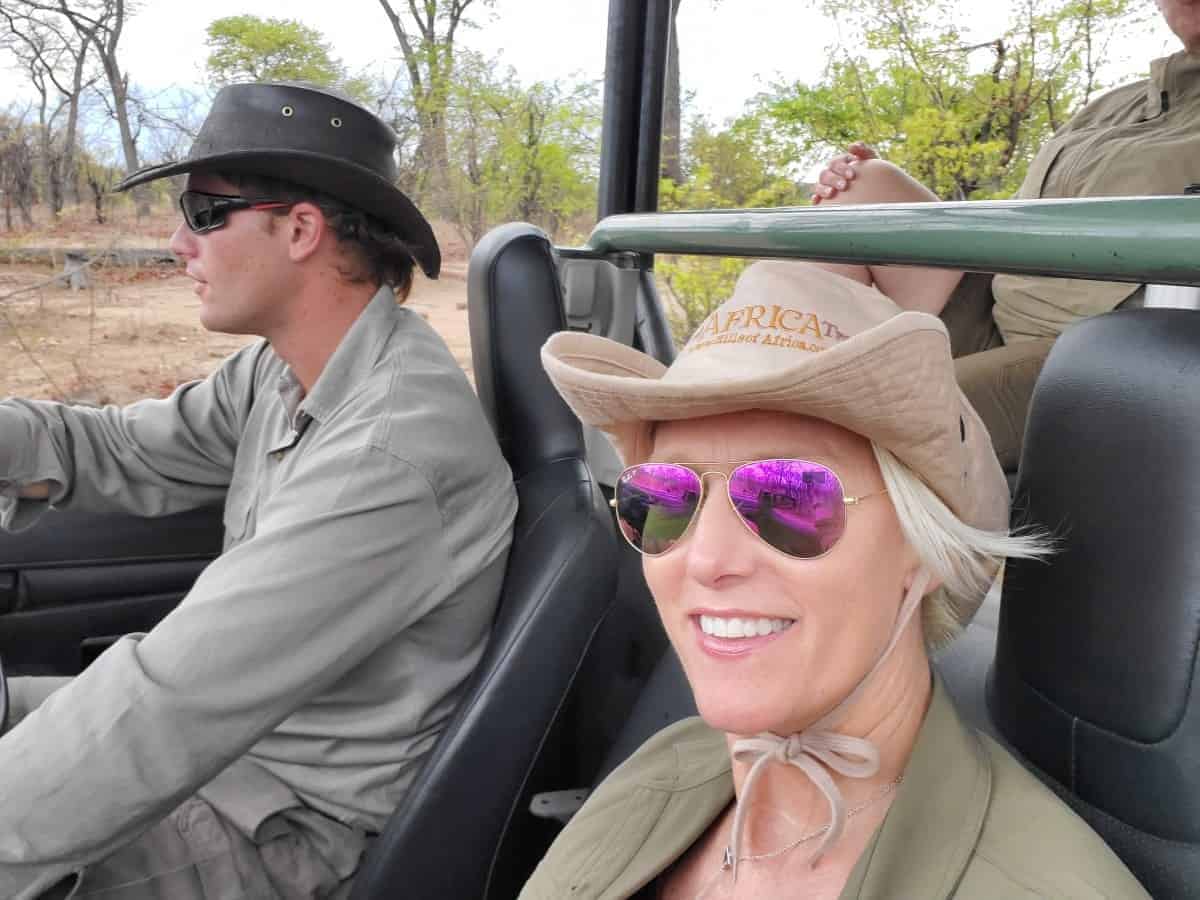
Adam Solomon with Camp Hwange got us there safely!
Hwange National Park, Zimbabwe
One of the 10 largest national parks in Africa, and the largest in Zimbabwe at 14,651 sq km, Hwange National Park, pronounced ‘Wang-ee’, has a ridiculous amount of wildlife. Some 400 species of bird and 107 types of animal can be found in the park, including lions, giraffes, leopards, cheetahs, hyenas and wild dogs. But the elephant is what really defines Hwange, being home to one of the world’s largest population of “eles”.

Image Courtesy of Camp Hwange
Camp Hwange:
Our first stop was at this beautiful eco-friendly camp situated in the central section of Hwange National Park near Shumba Pan and overlooking a perennial waterhole. The camp has of 8 chalets constructed out of poles and canvas under thatch, all with a panoramic view of the water-hole. This was a beautiful sight to see every morning & evening! The main camp was a great place to gather between safari rides.

David Carson, a passionate and well-known Zimbabwe professional guide with over 25 years of guiding experience in the Hwange National Park is the head of the team. David and his crew are incredibly knowledgeable, living and breathing their surroundings. When in camp, you need to be ready to jump out of bed and also stay up late. There are SO many things to be seen and the guides filled us in on everything from the history & habits of the animal inhabitants as well as the environment and how important each and every creature is in its rightful role in nature.
Best way to describe the camp:
Camp Hwange reverts back to the concept the original safari, where activities centred on being immersed in the wild, walking being the main activity. During walks with well trained and experienced guides you will track and follow some of the most feared animals of Africa, secure in the knowledge that your guides and trackers are competent in all aspects of this exciting adventure. Not only will you get the chance to see the well known dangerous animals, sightings and the habits of the smaller, lesser known species and aspects of the African bush will be explained you, giving you an insight into the mysteries of how all things depend on each other.
Want a quick safari fix? Follow Camp Hwange on Facebook – they post amazing updated content all the time. I feel like I’m back at camp whenever I visit their page.
Some of the Camp Hwange highlights included:
The Lion Supermodels: This pride is made up of two adult females (the original lionesses who have been in and around Camp Hwange from the beginning), 2 males and 2 female sub adults. One of the ladies was expecting during our visit and we got to see her up close. The Chifambas is another group made up of 4 young males and 3 young females, and are in the process of trying to take over the area that surrounds Camp Hwange – bush drama!
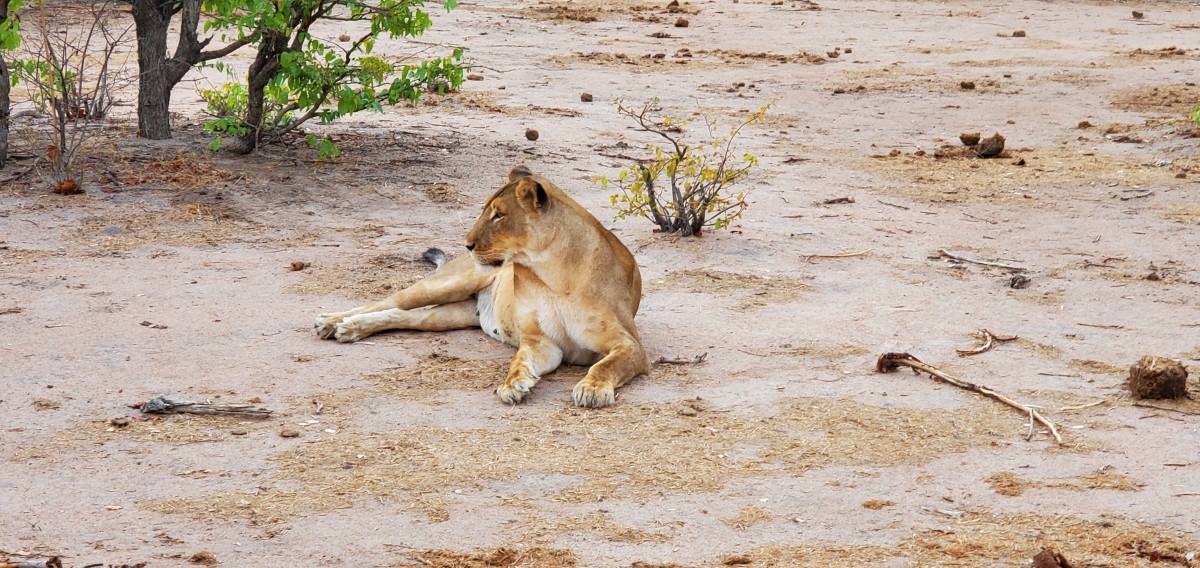
Supermodel strikes a pose
Ace the Cheetah – this guy is a camp favorite and we spotted him (see what I did there) before he headed off to bed during our first night ride and we also had a chance to see him the next morning. Cheetahs LOVE to mark their territory with urine and boy, did he ever. He must’ve peed at least 10 trees – busy guy!
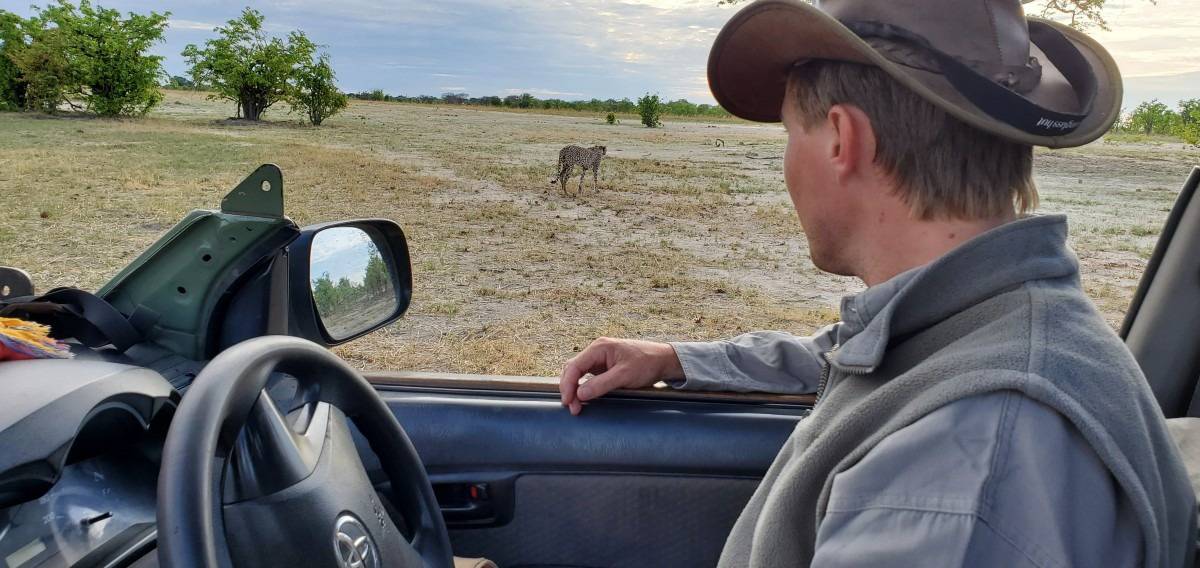
Our guide Adam Jones is a huge fan of Ace!
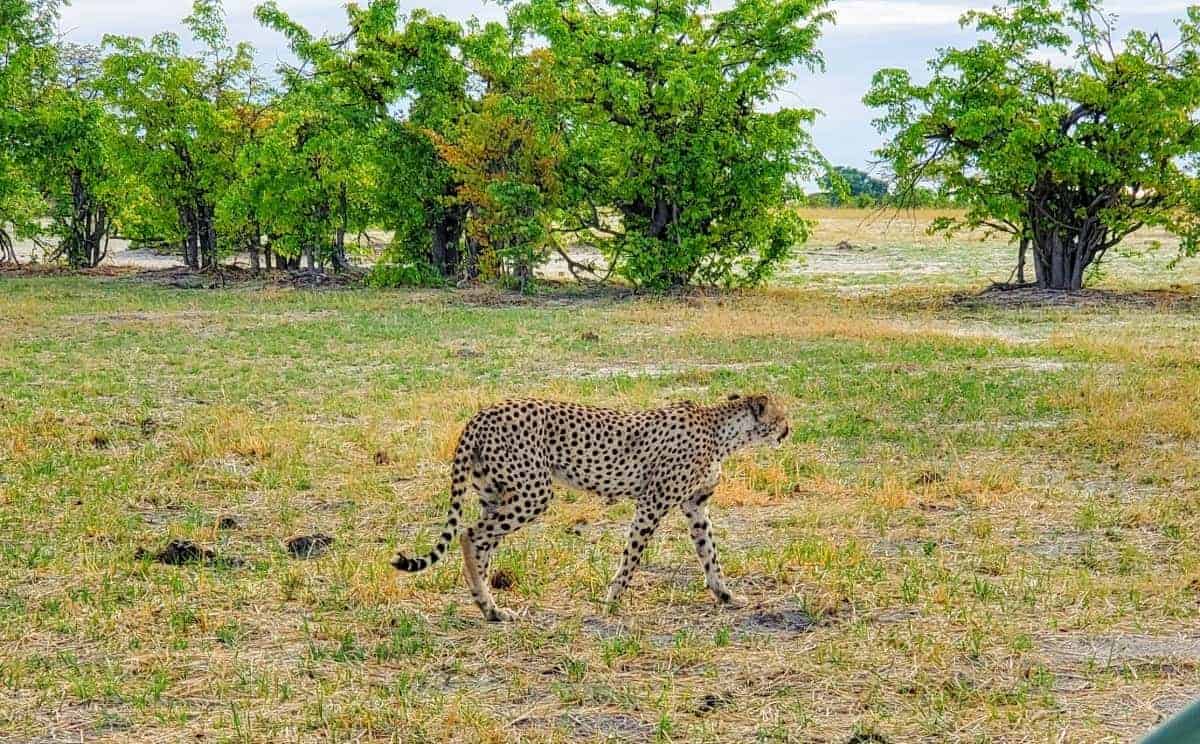
Gorgeous Ace
The elephants gathering at the pan were fascinating
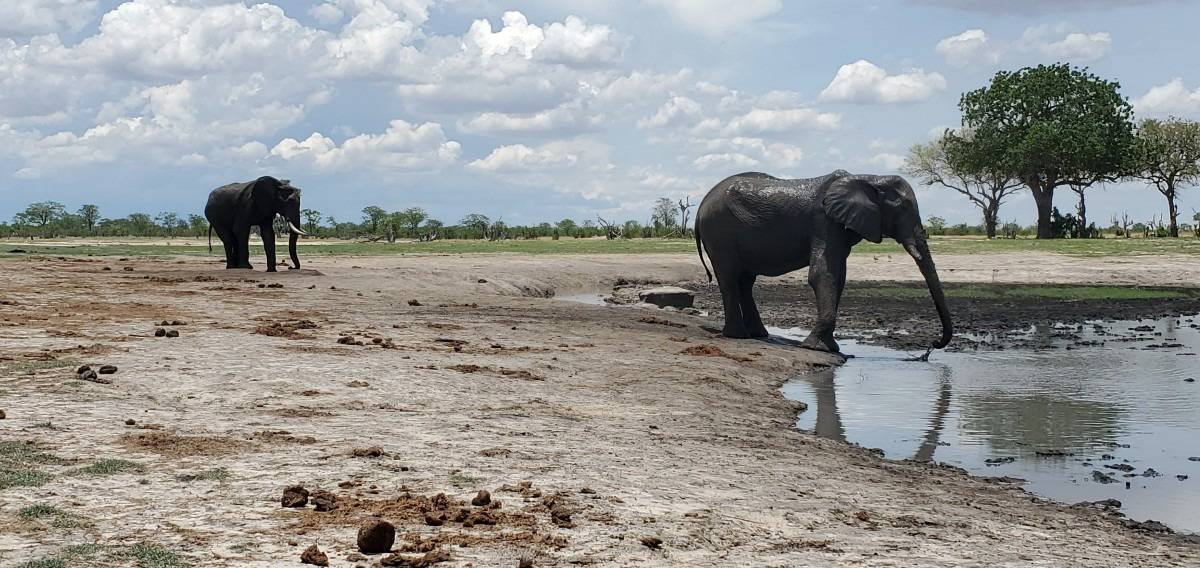
Filling up at the watering hole
The Red-Crested Korhaan had the moves! Our guide pointed out this beautiful bird and, right at that moment, the bird swooped high into the sky, flipped on his back in mid-air, tucking in his claws and dropped, almost hitting the ground. This crazy guy was trying to impress the ladies as part of his courtship antics. I’m still kicking myself for not catching it on film but I found this cool clip of a “suicide bird: drop here you can see his dance moves drop here and his mating dance here.
The Hide Safari Camp
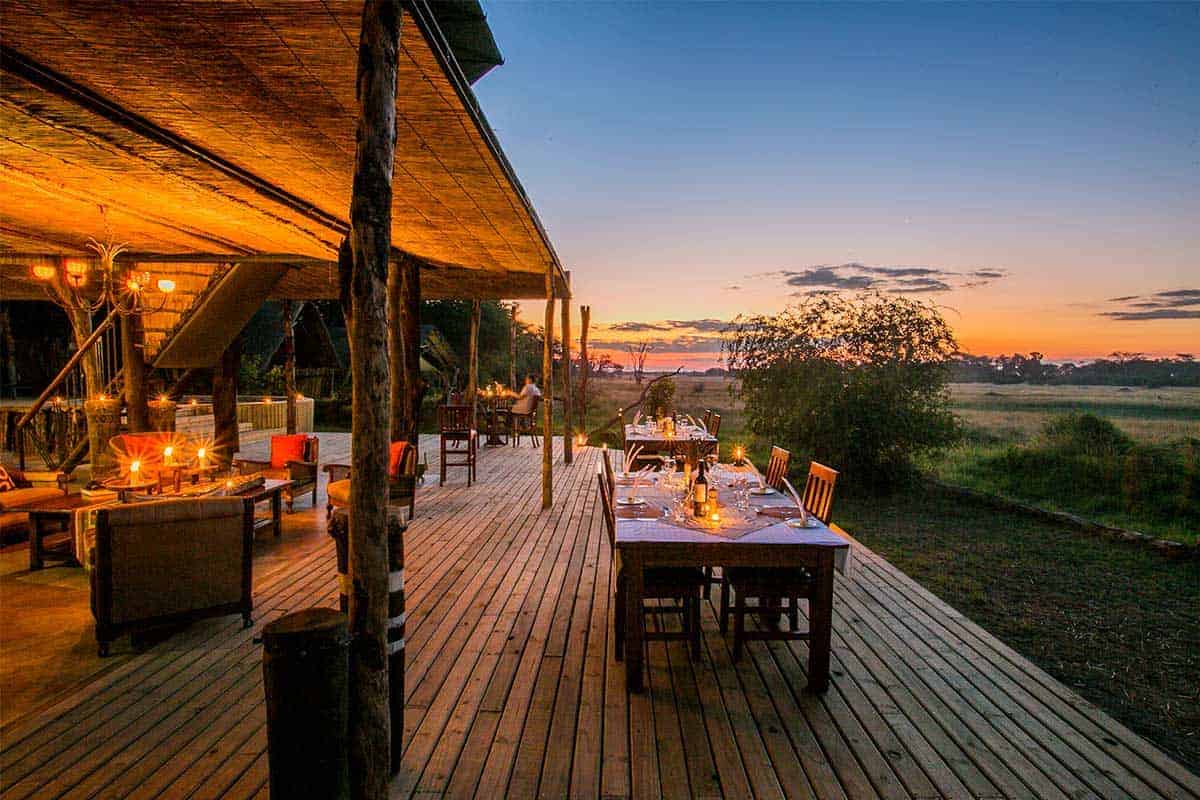
Image courtesy of The Hide
From Camp Hwange, we headed west about 112km – an approximate 4 to 5 hour drive to The Hide, a luxury camp situated on a private concession on the Eastern boundary of Hwange National Park and with stunning views across a natural waterhole. This place is incredible and has a very unique feature: The Underground Hide.
This unique feature is a tunnel that leads right up to the animals watering hole, allowing you to experience the animals up close and personal, without disturbing them. AND.. it has a wine cellar. Be still my heart! See the door in the ground? That’s the entrance! We had quite the encounter with a large herd of elephants – check out the video below:
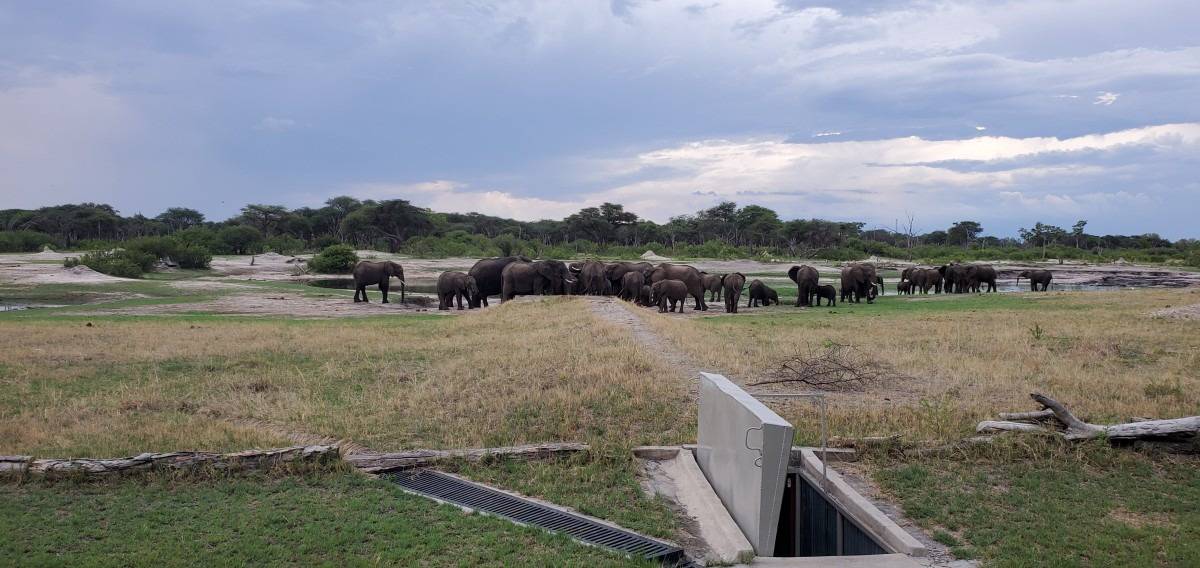
We packed a lot into our 2 days at The Hide which included a sighting of elusive bat-eared foxes as well as this handsome young male leopard:
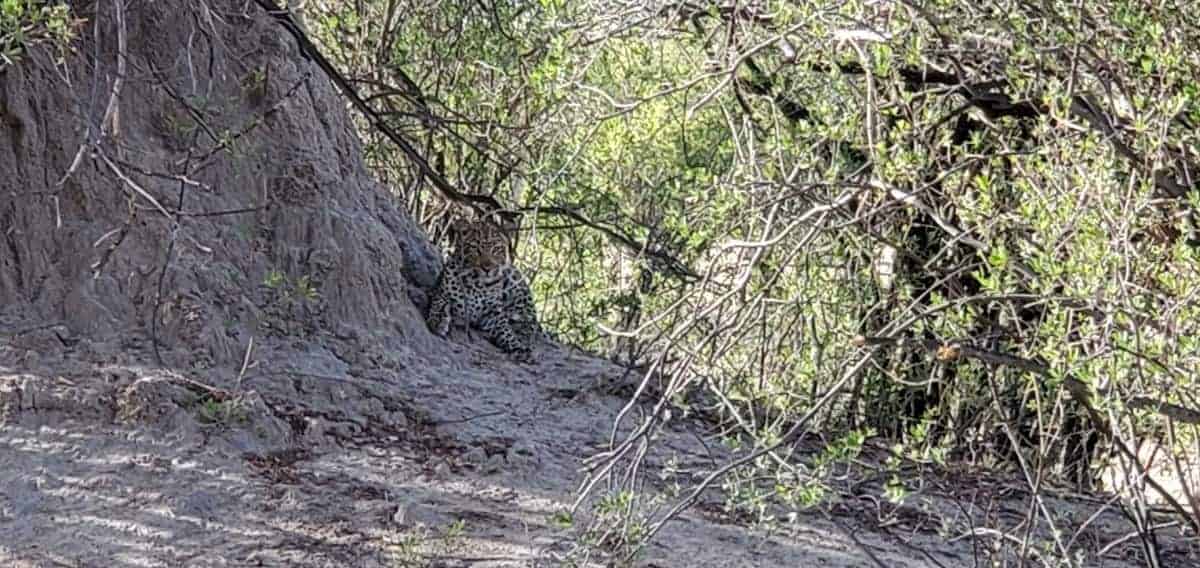
A Pride of Lions
We also came across a beautiful pride of 11 lions: 6 cubs, 3 females & 2 males. The females were formerly part of Cecil The Lion’s pride. You may remember this heartbreaking story from 2015 where Cecil was lured outside of the protective boundary of the park and then killed illegally by big hunters. When I realized some of the lions were part of his pride, I sobbed but was also so happy to see these beautiful creatures being protected within the National Park and the various camps and guides in the areas including the Hide and the extensive work done by individuals on the ground including the amazing Steve Alexander of Conservation & Wildlife Fund and Brent Staplekamp from The Soft Foot Alliance Trust. The beloved Cecil is now with his fellow male patriarch, Jericho and ruling high above Africa.
A Herd Of Elephants
Later on that day (our last in camp), a huge herd of elephants strolled across the pan to the watering hole and put on a show. Yes, I cried when I saw that too!
Conservation & Community
The Hide has its own community trust is a founding member of the Conservation & Wildlife Fund which is a collaborative group of concerned conservationists & Hwange National Park stakeholders. In addition, they are a member of The Long Run, one of the world’s largest business led sustainable development initiatives, guided by the 4 principles focusing on Conservation, Community, Culture and Commerce. And right on the grounds they have a tree nursery, compost, sustainable garden & more.
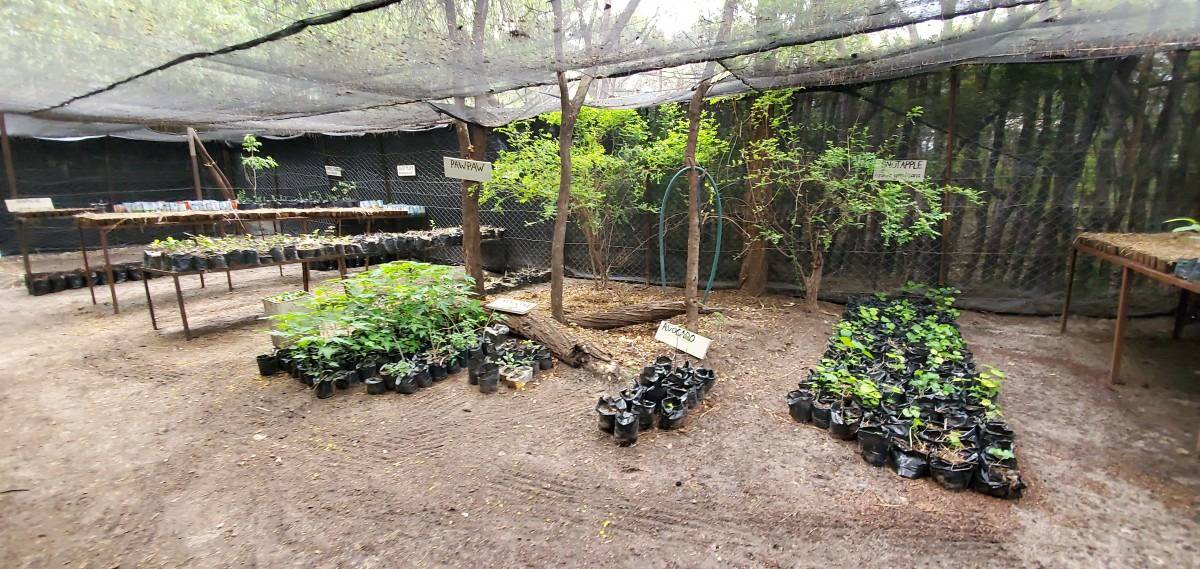
Sundowner in Africa:
The tradition of evening cocktails/happy hour is called “Sundowner” in Africa and it’s a lovely transition between the heat of the day and the lush African night. It generally involves a quick drive out to a lovely location with a great view of the African sunset. Add in good friends, traveling companions and of course, a refreshing beverage and it’s the perfect way to wash away the heat and dust of the day.
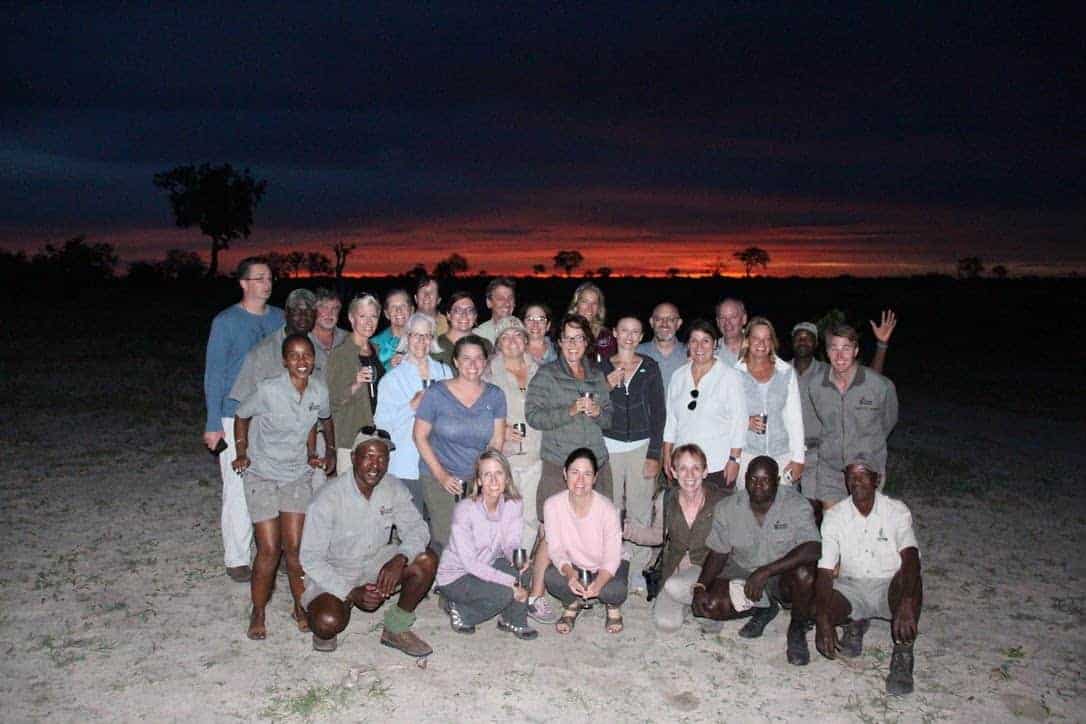
Camp Hwange
Traditionally, a Sundowner drink is a gin & tonic but all types of fun drinks & cocktails were on hand at our Sundowners both at Camp Hwange & The Hide
A little more info on the history: Winston Churchill asserted, “…The gin and tonic has saved more Englishmen’s lives, and minds, than all the doctors in the Empire.” And it’s true: the gin and tonic was in many ways the origin of the time-honored African tradition of “the Sundowner.”

The Hide Zimbabwe Safari Lodge
British colonists and soldiers used quinine powder to stave off malaria and other tropical diseases in the far-flung corners of their vast empire. The bitter pills proved difficult to swallow and were soon masked with soda water and sugar: the original tonic water, which was soon paired with gin in British India to create arguably the world’s most popular drink.
The Dove’s Nest at The Hide Safari Camp
On my last night in Africa, I stayed at the Dove’s Nest, located about 20 minutes from camp. By myself. Like a big girl. This lovely treehouse has several levels & includes a shower, tub, toilet (yup, right out in the open) and a screened-in bedroom area facing west. Gotta tell ya, it was a bit scary at first when the sun went down but listening to the sounds of nature, the wind blow, lions chuffing in the distance, it was an unbelievable experience I wouldn’t trade for anything. I figured, if I could stay by myself in a treehouse in the middle of nowhere in Africa, I can do anything! (I’ve called upon this experience several times since then when faced with something daunting, trust me!). I brought my chakra meditation mat with me and greeted the 5:15am rising sun with fresh coffee, bubbles that I brought with me from South Africa and a nice long meditation.
Packing for Safari:
Clothing: Pack neutral colors like khaki, olive green, tan and brown. Avoid wearing white and bright colors .I originally thought it was because it would attract the animals to me but it’s actually the opposite. When animals see bright colors, they think of danger and may run off.
For optimal sun and insect protection, long sleeves and long pants are best, along with a good hat, sunglasses, sunscreen and insect repellant with at least 30% deet.
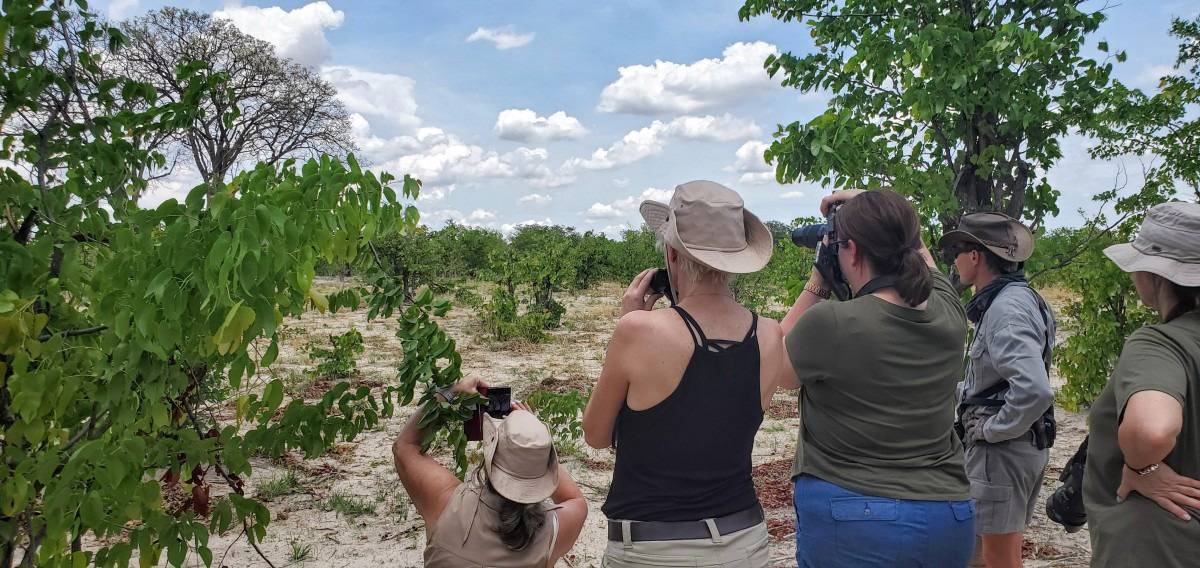
Shorts and short sleeve shirts will be comfortable for daytime wear, but long pants, hat, gloves, and jackets can be useful for early morning or nighttime weather
Comfortable walking or hiking shoes are a necessity. Leave the heels and wedges home for another trip.
Binoculars are a must! Pro Tip – plan on leaving them with the Anti Poaching Units – they can always use extra equipment and what a great way to show them support!
Pack light but also bring a lightweight dufflebag for gifts to bring back – nothing better than supporting the country’s economy by supporting local artisans!
Click here to get all the best packing information from Hills of Africa ! http://www.hillsofafrica.com/african-safari-packing-guide/
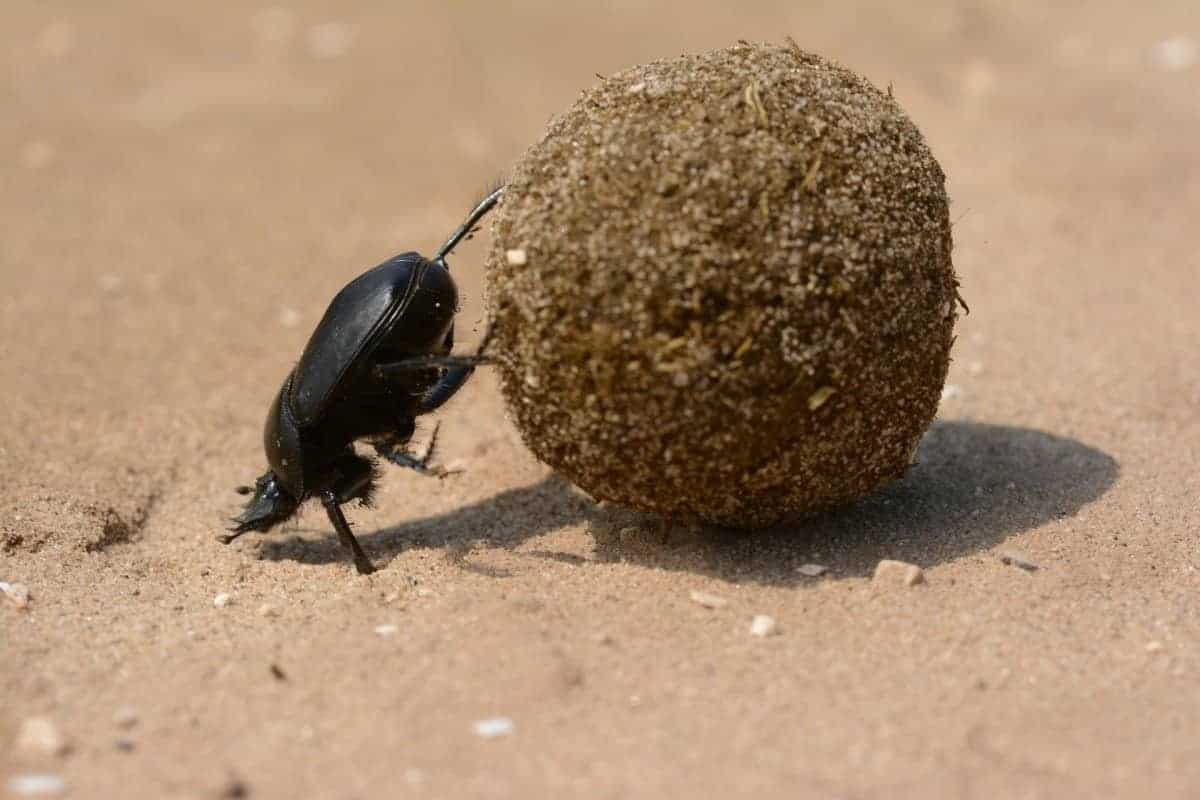 The Small but Mighty Dung Beetle:
The Small but Mighty Dung Beetle:
Yes, you read that right. The understated, hardworking dung beetle is perhaps one of the most extraordinary animals to walk this earth. First off – POOP (had to be said). But more importantly, the facts: 6,000 species of dung beetles take care of excrement around the planet – that’s a load of crap, no? These handsome, broad, powerful, chunky, glossy beetles burrow in the stuff, bury it, lay their eggs in it, eat it, and generally get rid of it before it creates a problem. Housing, food, a place to start a family. Who knew?!
Wait, there’s more: A dung beetle is not only the world’s strongest insect but also the strongest animal on the planet compared to body weight. They can pull 1,141 times their own body weight. This is the equivalent of an average person pulling six double-decker buses full of people.
Even more impressive, dung beetles have the ability to navigate by moonlight… making the dung beetle the only insects known to orient themselves by the galaxy.
I had the privilege of traveling in November 2019 with Hills of Africa Travel in collaboration with GIFTE – the Global Institute for Travel Entrepreneurs.
Hills of Africa Travel Founder Sandy Salle was born & raised in Zimbabwe and her love for Africa shows with the adventures that she and her team plan! For more information – click here and get your trip to Africa planned ASAP!

Shelley Cox of Africa Conservation Travel was instrumental in making sure our experience was immersive. Shelley’s connections & collaborative partners were beyond value and we all felt like family being welcomed home when we arrived at each destination!
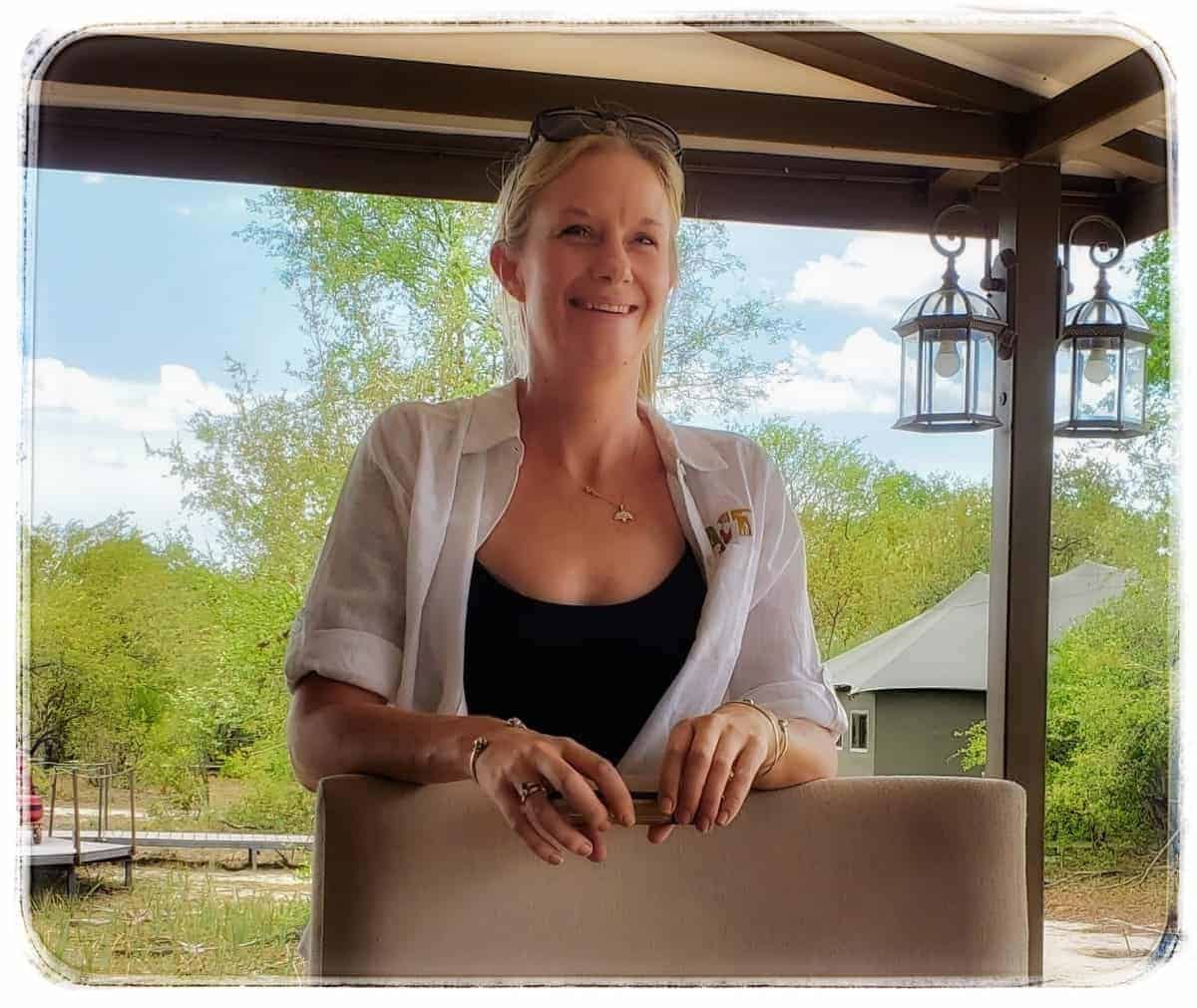
 ZOMBIE APOCALYPSE RATING: *A
ZOMBIE APOCALYPSE RATING: *A
(aka: Your ability to survive in a specific area should the Zombie Apocalypse occur)
Listen, people, out in the safari bush is where you wanna be during a ZA outbreak. You can see for miles, the camps are already prepared to be offgrid, most folks (especially guides) are a great shot. I have to admit, when I stayed overnight at the Dove’s Nest, I definitely thought about zombies more than anything. I watch Walking Dead waaay too much.
*ZA Rating drops to C- if the outbreak effects animals because, let’s face it, if all those amazing creatures get infected, you may as well check out.

